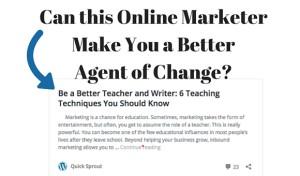You know me as a peace process guy, a conflict resolution trainer, an author of peace training materials. You don’t know this: I love guns.
As far back as I can remember, guns hung on the wall and stood in the corner of the pump house on the family farm in Lancaster County, Pennsylvania, where I grew up. Carrying a 12 gauge shotgun down rows of corn on a chill Saturday morning in October, our terrier on the prowl and all my teenage senses tuned to the hunt, thrilled me. With the deadly power I carried at the ready I could bring home a pheasant or rabbit if I was quick enough. I felt grownup, part of the world of men.
So in 1993, in a remote training camp in the high veld above Pretoria, on the third day of a course in conflict resolution I was leading for police readying for the new South Africa, when a couple of smiling officers came during morning break and asked if I’d like to go out on the firing range, I didn’t hesitate to say yes. 
I wasn’t sure exactly what they had in mind, but when I jumped into their van after lunch, a clinking pile of weapons and ammunition covering the floor left little doubt. Three police trainers grinned at me knowingly, like boys in a toy store. My heart was pounding.
We started with rubber bullets, in two varieties. One was a heavy slug of rubber an inch and a half in diameter and over 3 inches long. I had seen these fired at protesters and witnessed a colleague take a direct hit a year ago as a peace monitor working a chaotic line between police and protesters. She limped into the office the next day with an angry welt on her thigh the size of a saucer. Centered in the dark purple was a perfectly round, pure white circle larger than a quarter, exactly the size of the slugs I was now firing.
Then to more lethal crowd control, hard blue plastic balls the size of marbles with a metal core. In their shotgun shell casing, they had the same ready-for-action look that had intrigued me about the pumpkin ball shotgun slugs I remembered from deer hunting in my youth.
On to birdshot in a 12 gauge shotgun. This brought memories of my first experience with a gun at the age of twelve, when, holding the long, heavy weapon level and and steady occupied my attention so fully that I neglected to secure it tightly against my shoulder. Its kick hurled it up and over my head to the ground, leaving me with a bruised ego and a sore shoulder for a day.
Now on the firing range, two shots were enough of this familiar weapon for me and I was ready to move up to more exotic ones. But the magazine held 10 rounds; the police trainer insisted, as a safety protocol, for this and all weapons he handed me that day, that I fire every round. As I braced myself with manly deliberation and squeezed off another eight rounds, I wondered how my shoulder would feel tomorrow.
Then we graduated to weapons I’d rarely seen and never fired. The Uzi machine gun, I wrote in my journal that evening, was “wonderfully light, compact, and maneuverable, elegant as a laptop computer.” Then R4 and R5 rifles, South African automatics of similar caliber to the American M16.
Long belts of ammo for each. No worries about kick now – they’re low-recoil rifles! T-t-t-t-t-t-t-t-t-t, an axis of power dancing sweetly on my shoulder, my authority radiates into the beyond!
Next ten rounds with a Beretta pistol. I’d had a recurring dream for years about shooting an unknown invader with a pistol. I wondered as I fired at a human shaped target 30 yards away if this real life experience would feed or extinguish the dream. For someone who hadn’t fired a gun for twenty years, I turned out to be a pretty good shot, coming within inches of my target with the pistol, as I had with the rifles at 125 yards.
We concluded with smoke grenades, tear gas, stun grenades, and tracer bullets shot by a light machine gun. With a range of 800 meters, nearly half a mile, the latter didn’t seem so light to me. It required a strong arm to raise and aim, until I laid prone on the ground and used the short bipod on the muzzle. I felt something close to omnipotence sending a deadly arc high into the mountain towering above the far end of the range.
I loved every minute of that hour on the firing range. As a lifelong tinkerer, I relished the mechanical elegance of the deadly tools in my hands. I respected that each was a highly crafted device, the product of years of experimentation and creative thought, and beneficiary of endless rounds of improvement.
Even more, I loved the sense of power I felt with precise and mighty machines in my hands. I loved that I could stand here, in one place, aim at something far away, and with a slight squeeze of a finger, obliterate it.
Perhaps most of all, I loved the camaraderie I felt with the police officers. In the methodical receiving and handing back of powerful and uncommon weapons, I felt part of a privileged club. I was an honored man among a highly skilled elite.
By the time we finished, I felt that I’d survived – no, thrived – in a kind of brotherly test that had morphed into a ritual of belonging. I was aninsider. When we returned to the training venue and the trainers described my skill to their beaming colleagues, my relationship with the whole group was sealed.
And my conscience was seared. I had spent years teaching skills for nonviolent resolution of conflict. I’d worked and lived in places where weapons caused indescribable grief. Had I sent precisely the wrong message by going along with these officers, eager as boys to share their toys, in enjoying the thrill of weapons?
What did it say about me that I enjoyed it all so much?
More than twenty years later, I am still not sure I did the “right” thing that day. But I am grateful for that experience and for things I now see with greater clarity.
I understand something about love of guns. There’s no denying it – I too am drawn to powerful weapons.
I also came to understand something about why. Wielding, firing, managing elegant and powerful devices that have been refined to respond to my control is fun – for me, self-evidently so.
But the big joy, I came to see in retrospect, was not in the weapons per se but in things that came to me through them. For that hour and the rest of that day I felt powerful, capable, connected, esteemed, luxuriously so. Guns get a grip on the psyche because they offer a quick, intense shortcut to things we’d all like to feel more often.
And it doesn’t take a Solomon to recognize that quick thrills don’t last. Nor can you sustain healthy lives around them. In the end only authentic relationships, meaningful involvements, and deep spirituality can truly satisfy.
I do not doubt that some who own and use guns possess all three of those in generous measure. But in the shrill, defiant voices of many I hear something different – pre-occupation with guns as a solution to fear and a symbol of meaning.
This is misplaced hope; a mark of inner shortcutting. No devices, deadly or otherwise, no matter how numerous or powerful, can bring peace or meaning to those whose lives are empty of things that endure.
Loyalty and memories of long ago cornfields brought me some years ago to pass along to my teenaged son a shotgun once owned by my grandfather. Today I’d probably discard it. I’ve seen too many lives and families destroyed by weapons to keep one in my own home. And statistics show my family and I are safer without them in the house.
I no longer dream about firing at an unknown invader with a pistol. But I confess that I am still intrigued with weapons, a reminder, I take it, of spaces in heart and soul that still long for shortcuts. I’m in this thing for life.
Ron Kraybill recently retired as a senior advisor on peacebuilding for the United Nations. He has worked in peace processes in Ireland, Myanmar, Sri Lanka, Israel/Palestine, South Africa, Lesotho, the Philippines, and other locations. Currently he lives in Silver Spring, Maryland, and serves as a trainer and consultant in conflict resolution, and publishes conflict resolution training materials at www.RiverhouseEpress.com.





